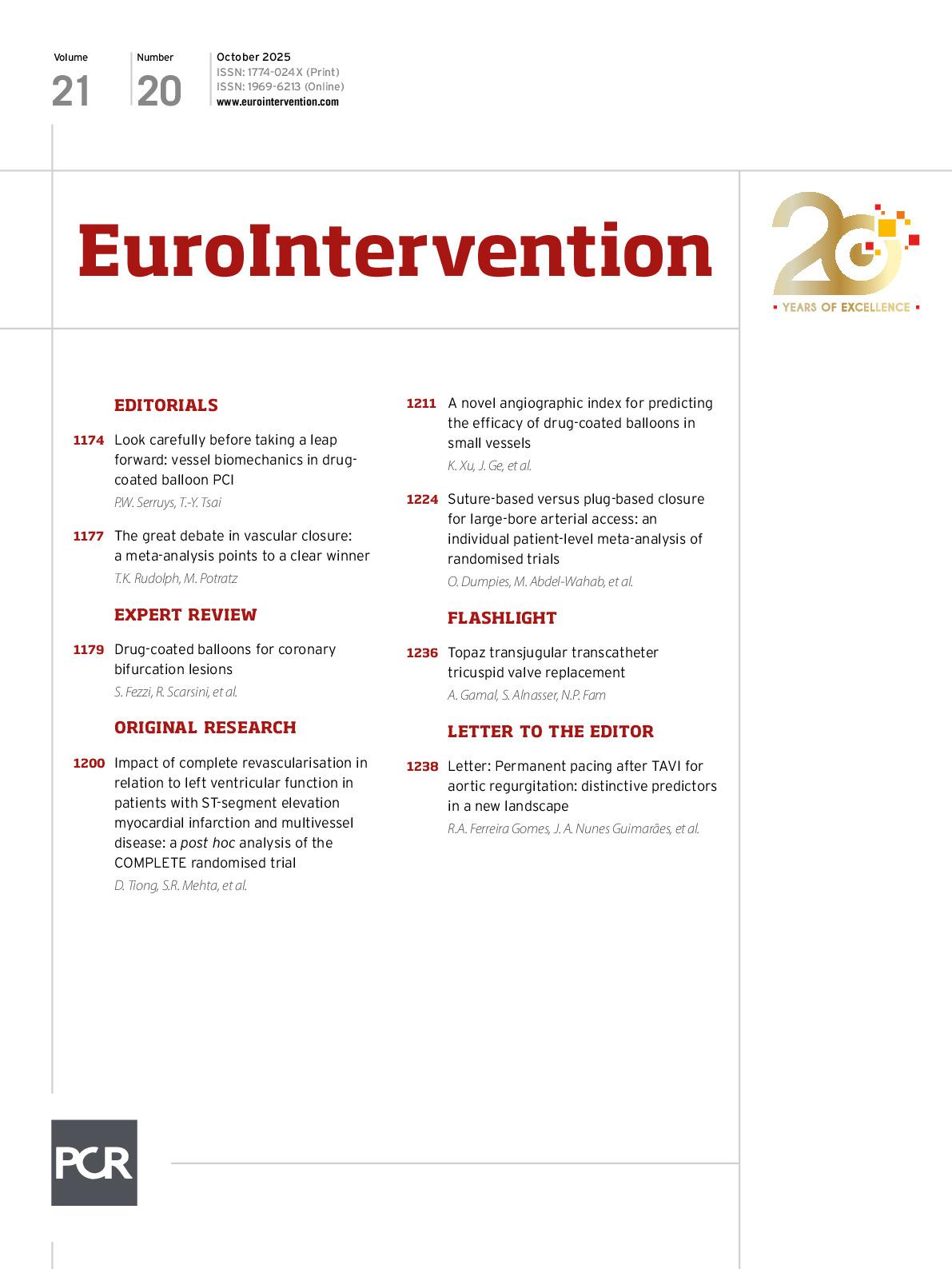Abstract
Background: The COMPLETE trial demonstrated a reduction in cardiovascular (CV) death or new myocardial infarction (MI) after complete, rather than culprit-only, revascularisation in patients with ST-segment elevation myocardial infarction (STEMI) and multivessel disease (MVD). However, it is unknown whether this benefit varies according to baseline left ventricular ejection fraction (LVEF).
Aims: We aimed to determine the effects of complete versus culprit-only revascularisation according to LVEF.
Methods: Baseline LVEF was available for 2,214 of 4,041 randomised patients. The effect of both strategies on the first co-primary outcome of CV death or new MI and the second co-primary outcome of CV death, new MI, or ischaemia-driven revascularisation (IDR) was determined within the prespecified LVEF ranges of <45% (N=660) and ≥45% (N=1,554). An analysis of clinical outcomes by LVEF according to thirds was also conducted.
Results: Patients with LVEF <45% experienced a significantly higher incidence of the first co-primary outcome compared with those with LVEF ≥45% (4.2%/year vs 2.8%/year; hazard ratio [HR] 1.51, 95% confidence interval [CI]: 1.15-1.98; p=0.003). Compared with a culprit-only strategy, complete revascularisation consistently reduced the first co-primary outcome in patients with LVEF <45% (3.0%/year vs 5.5%/year; HR 0.55, 95% CI: 0.36-0.86) and those with LVEF ≥45% (2.4%/year vs 3.2%/year; HR 0.74, 95% CI: 0.52-1.04; interaction p=0.31). Complete revascularisation also consistently reduced the second co-primary outcome in patients with LVEF <45% (3.5%/year vs 7.3%/year; HR 0.49, 95% CI: 0.33-0.74) and those with LVEF ≥45% (2.7%/year vs 6.3%/year; HR 0.44, 95% CI: 0.33-0.60; interaction p=0.67). Consistent results were observed for both co-primary outcomes when LVEF was further stratified into categories of LVEF ≤35%, 36-49% and ≥50%.
Conclusions: Among patients presenting with STEMI and MVD, those with reduced LVEF are at higher risk of ischaemic events than patients with preserved LVEF. There is a consistent benefit of complete revascularisation regardless of baseline LVEF.
Sign up for free!
Join us for free and access thousands of articles from EuroIntervention, as well as presentations, videos, cases from PCRonline.com

